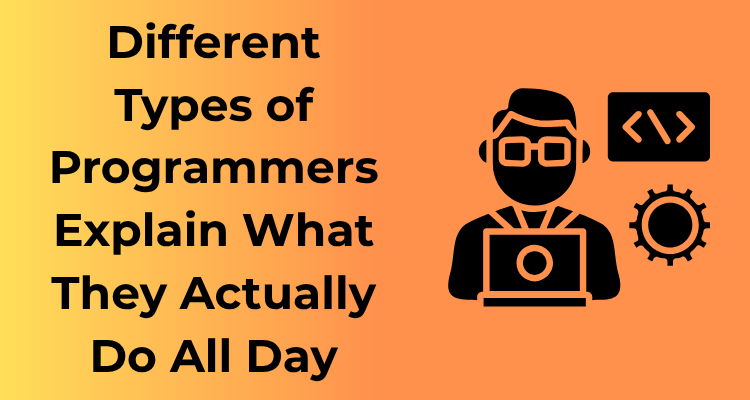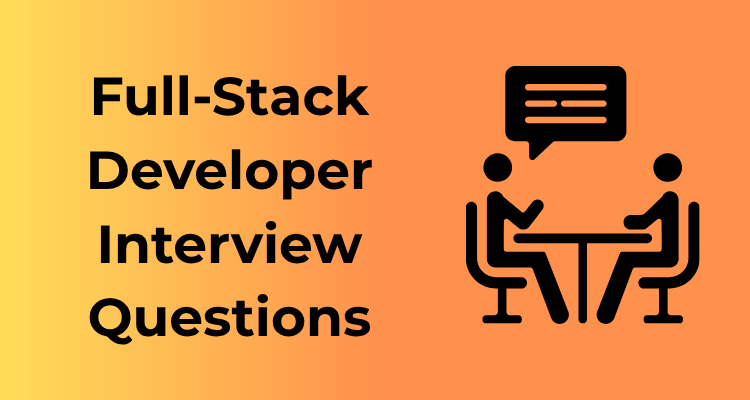The world of programming isn’t one-size-fits-all. Behind every digital innovation lies a team of specialists, each with their own expertise and workflow. From building the foundation of software to enhancing user experience and maintaining airtight security, different types of programmers keep the digital world running seamlessly. In this blog, we’ll explore who they are, what they do, and why each role matters more than you might think.
Code Creators: Building The Foundation
Imagine building a house—you wouldn’t start without laying a solid foundation, right? Well, that’s exactly what Code Creators do in the programming world. These are the masterminds who write the lines of code that serve as the bedrock of every software program, app, or website you’ve ever used. They’re the architects of digital environments, shaping how platforms work from the ground up.
What Does a Code Creator’s Day Look Like?
While it might seem like they’re simply glued to their keyboards, there’s a lot more going on behind the scenes. Here’s a sneak peek:
- Writing Code: Without a doubt, their primary responsibility is writing clean, functional, and efficient code. Whether it’s JavaScript, Python, Java, or Ruby, they’re crafting the instructions that dictate the behavior of applications.
- Collaborating with Teams: Code Creators rarely work in isolation. They’re in constant communication with other programmers, designers, and stakeholders to ensure the project aligns with the overall vision.
- Testing New Functionalities: Before releasing new features or updates, they double-check—sometimes triple-check—their code to ensure everything runs smoothly.
- Learning New Tools: The tech world evolves quickly, and Code Creators love to stay ahead. A significant part of their day may include exploring new frameworks, languages, or techniques to enhance their craft.
Characteristics of an Excellent Code Creator
Not everyone’s cut out for the demands of building the digital foundation. The best Code Creators are built differently. Here’s why:
- Detail-Oriented: The tiniest typo or misplaced semicolon can mean hours of frustration. Code Creators have a ninja-like eye for detail to prevent such headaches.
- Logical Thinkers: Programming is all about solving puzzles. Code Creators excel in breaking complex problems into smaller, manageable pieces to find the best solution.
- Creative Innovators: It’s not just about logic—coding often requires thinking outside the box to create features users love.
Why Their Work Matters
Every app that you use—whether it’s your favorite social media platform or a banking app—exists because of the brilliant work of Code Creators. They’re essentially building the language that allows machines to execute sophisticated tasks effortlessly.
For example, if you’ve ever shopped online, Code Creators are behind the cart functionality that remembers all your items, the checkout process, and even the recommendation engine that suggests products you might like. Without them, none of this would work!
Words of Advice for Aspiring Code Creators
If you’re dreaming of becoming a Code Creator, you’ve got to start with the basics first. Learn one coding language at a time. HTML and CSS are great starting points for web development, while Python often tops the list for beginners overall. Remember, you don’t need to know everything overnight. As Code Creators often say, “Just start coding.”
Debugging Detectives: Fixing The Flaws
Ah, the life of a debugging detective! It might not have as flashy a reputation as creating new features or designing sleek interfaces, but ask any seasoned programmer, and they’ll tell you—debugging is the glue that holds the digital world together. Without it, even the most flawless-looking applications would crumble under the weight of hidden errors. Let’s dive into what these folks actually do every day.
So, What is Debugging Anyway?
Debugging is a process that requires patience, analytical skills, and a touch of creativity. At its core, debugging involves identifying, isolating, and fixing errors (commonly called “bugs”) in code so that everything runs like a well-oiled machine. Think of it like being a digital detective: these programmers hunt down issues, interrogate their suspicious code, and solve mysteries one bug at a time.
A Day in the Life of a Debugging Detective
What does a typical day look like? No two days are the same, but here’s a general idea:
- Morning log checks: Debugging detectives often start their day by going through application logs or error reports. These logs provide valuable clues about where the application might be misbehaving.
- Recreating the issue: Once they’ve spotted a potential bug, they try to replicate it. This step can feel like solving a puzzle—figuring out exactly what sequence of actions led to the issue appearing in the first place.
- Digging into code: With the problem spotted and recreated, they dive into the source code. Like an archaeologist unearthing layers of history, they sift through scripts and frameworks to pinpoint the root cause.
- Testing solutions: After identifying the problem, debugging detectives brainstorm and implement a fix. The next step? Testing to ensure it solves the issue without creating new ones!
- Collaborating with teammates: Debugging doesn’t happen in isolation. Detectives frequently consult team members, whether it’s the developer who wrote the original code, QA testers, or even customers who encountered the bug.
Tools of the Trade
Debugging today is much more manageable thanks to the suite of tools available. Some of the trusty sidekicks every debugging detective depends on include:
- Debuggers: Tools like the ones built into integrated development environments (IDEs) help trace code step by step until the error is found.
- Version control systems: Platforms like Git allow programmers to track changes and revert code to earlier versions if needed.
- Automated error tracking tools: Tools such as Sentry or LogRocket monitor live applications and flag issues in real-time for quicker resolution.
More Than Just Fixers
While their core function is problem-solving, debugging detectives often go beyond just fixing things. They ensure that the codebase becomes more resilient. They contribute heavily to writing cleaner and more efficient code, introducing better testing methods, and documenting fixes so future detectives don’t fall into the same traps. Essentially, they’re building a “better bridge” for both the current and future development team.
Key Traits of a Great Debugging Detective
Think debugging might be for you? Then the following traits will help you succeed:
- Attention to detail: Bugs often hide in the smallest inconsistencies. An eagle eye for detail is crucial.
- Problem-solving mindset: A love for cracking mysteries and solving complex problems is a must.
- Patience: Sometimes it takes hours—or days—to unearth an elusive issue. But perseverance always pays off.
UI/UX Shapers: Keeping Things User-Friendly
Let’s talk about a day in the life of a UI/UX programmer, shall we? These creative tech wizards are the ones responsible for making sure the digital world is not just functional but delightful. Every time you think, “Wow, this app is so easy to use!” you’ve likely got a UI/UX shaper to thank. Their job is to build experiences that not only work but feel intuitive and enjoyable to users.
What Exactly Does “UI/UX” Mean?
Good question! UI stands for User Interface, while UX means User Experience. The interface (UI) is what you interact with directly—those buttons you click, the sliders you drag, and the menus you navigate. Meanwhile, UX is about how you feel while using a product: is it smooth, frustrating, or satisfying?
It’s like visiting a store. The UI is the layout, shelves, and signs, while the UX reflects how easy and enjoyable it was to find what you needed (and maybe discover something extra along the way). Combined, UI and UX shape whether you’re happy to come back—or vow never to visit again.
A Peek into Their Day
In the daily life of a UI/UX programmer, tasks can be super diverse. Let’s break it down:
- User Research: They start by understanding the audience. What do users want? What frustrates them? Surveys, focus groups, and analyzing behavioral data all come into play here.
- Wireframing: Using tools like Figma or Adobe XD, they sketch out blueprint-like diagrams of what a screen or flow might look like—just black-and-white for now!
- Prototyping: Then, it gets a bit more dynamic. They create clickable mockups you can interact with, testing whether the design works as intended.
- Collaborating with Developers: While their designs are art-like, UI/UX programmers collaborate closely with frontend developers to ensure their vision translates into functional code. This requires strong communication and teamwork!
- User Testing: After building something, the next step is watching real people use it. Do users feel lost? Are they smiling or sighing?
Must-Have Skills
So, what’s in the toolbox of an excellent UI/UX programmer? Understanding accessible design principles (for inclusivity!), leveraging design libraries, and often some coding knowledge (such as HTML/CSS) is crucial. They also need loads of empathy for the end user—it’s all about what others feel, think, and experience when navigating through a product.
Why Is Their Role So Important?
You might have the best functionality in an app or website, but if users can’t find the features or get frustrated quickly, guess what? Game over. UI/UX ensures that tech isn’t just powerful—it’s usable.
Consider this: Have you ever bailed on a website because it loaded too slowly or was just plain confusing? Poor UI/UX was likely the culprit. Great UI/UX means happy users, reduced frustration, and an experience you’d love to return to—it’s not just a “nice to have”; it’s a necessity.
Backend Engineers: Behind-The-Scenes Heroes
When you visit a website or use an app, everything seems seamless, right? You click, and things happen. But here’s the catch—there’s a lot going on behind the curtains! Enter the Backend Engineers, those unsung tech heroes making sure your experience is smooth, secure, and functional. Let’s dive into what these coding magicians actually do all day.
What Does “Backend” Even Mean?
The “backend” is everything you don’t see but is essential for the tech you use daily. It’s like the engine of a car—you might admire the shiny paint job (aka the user interface), but without the engine (the backend), you’re not going anywhere. Backend Engineers are responsible for creating and maintaining this critical engine for websites, apps, and software.
Split-Screen Reality: A Day in the Life of a Backend Engineer
Let’s break down a typical day for these behind-the-scenes masterminds:
- Writing Server Code: This is where it all starts. Backend Engineers build the logic that powers functionality, whether it’s sending a confirmation email, processing payments, or fetching data you requested.
- Connecting Databases: Ever wonder where all your information—like your email login or bank balance—gets stored? That’s on a database! Backend Engineers ensure these databases are lightning-fast, secure, and organize data effectively.
- API Building: APIs (Application Programming Interfaces) are like translators. Backend Engineers build APIs to make sure that apps, websites, and your favorite services can talk to each other, despite being built differently.
- Problem-Solving: Oh no! The app crashed, or user requests are timing out. Backend Engineers debug complex issues to make sure everything runs smoothly, even under stress, like during Black Friday sales.
- Scaling Systems: What happens when millions of people log in at the same time? Backend Engineers create systems that scale up efficiently to handle those spikes without breaking a sweat.
Skills That Set Backend Engineers Apart
Their “toolbox” is extensive, and while it sounds intimidating, they work on learning these tools every day. Here are a few key skills they bring to the table:
- Programming Languages: Think Python, Java, Ruby, PHP, or Go. These are their bread and butter for building the logic you can’t see.
- Database Management: Knowing how to play nice with databases like MySQL, PostgreSQL, or MongoDB is a must.
- Server Management: They’re wizards with server and hosting services such as AWS, Microsoft Azure, or Google Cloud.
- Analytical Thinking: They solve problems you didn’t know existed before they even impact users!
Why Backend Engineers Matter
Think of Backend Engineers as architects and plumbers rolled into one—they design the blueprint for a digital space, then ensure the foundation is rock-solid, pipes don’t leak, and everything flows. And while their efforts might not always get the spotlight, their contributions are absolutely crucial.
Want to Become a Backend Wizard?
If diving into code, solving problems, and thinking logically excites you, a career as a Backend Engineer might be a great fit! Start by learning programming basics, then move to backend-friendly languages like Python or Java. Database systems, cloud hosting, and API development will eventually become second nature. And remember—patience and practice are your best allies.
Data Whisperers: Handling The Numbers
Let’s take a moment to talk about a truly fascinating group in the programming world: the data whisperers. These are the folks who know how to make sense of the endless streams of data floating around in today’s digital landscape. If you’ve ever wondered how Netflix recommends your next binge-worthy series or how Google knows you’re probably searching for “pizza near me,” you can thank a data whisperer — well, technically a data scientist, analyst, or engineer.
What Do Data Whisperers Do?
Data whisperers have one primary goal: turn chaotic data into clear and actionable insights. Think of them as the puzzle-solvers of the digital age. These programmers dive into oceans of numbers, structured or otherwise, seeking patterns, trends, and secrets. It’s not just about crunching numbers with some fancy math—it’s about crafting compelling stories hidden within those numbers.
Here’s a breakdown of their day-to-day responsibilities:
- Data Cleaning: Before you can analyze data, you have to clean it. This means fixing errors, filling gaps, and ensuring everything fits neatly into rows and columns. Messy data equals messy results.
- Data Analysis: Using programming languages like Python, R, or SQL, these wizards search for insights that can inform everything from business decisions to customer experiences.
- Building Algorithms: Data whisperers often train machine learning models to predict trends and outcomes. Whether it’s monitoring stock performance or tailoring product recommendations, algorithms are their magic spells.
- Data Visualization: Sometimes, numbers speak louder when visualized. Creating charts, graphs, and dashboards to make sense of the data is a big part of the job.
- Collaboration: These programmers aren’t always alone. They work closely with product teams, marketers, or scientists to transform raw data into solutions for real-world problems.
Why Does the Work of Data Whisperers Matter?
In today’s data-driven world, nearly everything we do generates information. But raw data isn’t inherently useful; it needs interpreters. Data whisperers hold the key to unlocking the value of this data so organizations can take informed action. They empower industries like healthcare, finance, and tech to make smarter, more efficient choices.
Let’s put it into perspective with an example. Imagine you’re a hospital administrator. You sit on piles of patient data—things like admission trends, treatment outcomes, and readmission rates. A data whisperer can help by crunching those numbers to detect patterns, identify pain points, and streamline processes. The end result? Better patient care and cost savings. Now that’s impact!
Do You Have What It Takes to Be a Data Whisperer?
If this sounds like your cup of tea, here’s a checklist for you:
- A love for numbers: You don’t need to be Einstein, but an appreciation for math will help.
- Curiosity: Asking the right questions is the first step to finding great answers.
- Programming know-how: Familiarity with tools like SQL, Python, or R will make your life a lot easier.
- Communication skills: Remember, your job is to tell a story with data. If people can’t understand your insights, they’re useless.
Ultimately, data whisperers are shaping how the world makes decisions. From predicting the weather to improving cybersecurity, their work is transformative. So, the next time you notice your favorite app predicting your needs with uncanny accuracy, give a silent nod to these unsung heroes. They’re more than just number crunchers—they’re the architects of an informed future.
Security Buffs: Safeguarding the Digital World

Ever wondered who keeps hackers at bay, shrouding our online world in virtual armor? Enter the superheroes of the programming universe: security buffs! These professionals are the guardians of digital fortresses, ensuring that sensitive information doesn’t fall into the wrong hands. But what do they actually do all day? Let’s break it down in a way that’s easy to understand and packed with insights you can take into your next cybersecurity conversation.
Fro Passwords to Protocols: The Daily Battles
Security buffs wear many hats, and no two days are exactly alike. Here’s a glimpse into their typical tasks:
- *Scouting for Vulnerabilities:* Imagine walking through a house, checking for unlocked doors and open windows. That’s essentially what security professionals do in the virtual world. They run penetration tests—essentially simulated cyberattacks—to identify weak points before cybercriminals can exploit them.
- *Building Fortresses:* Once weaknesses are found, it’s their job to shore up the defenses. They might improve encryption protocols, ensure firewalls are updated, or lock down access with robust authentication systems.
- *Monitoring Threats:* Security buffs stay on high alert, constantly monitoring for suspicious activity. Tools like Intrusion Detection Systems (IDS) help them keep an eye on networks, identifying potential breaches as quickly as possible.
- *Educating the Team:* A significant part of their role involves training team members to be more security-conscious. After all, even the most secure systems can be compromised by a careless click on a phishing email!
Key Tools of the Trade
Security buffs don’t just rely on instinct or luck. They have a whole arsenal of tools to keep digital environments secure. Some common ones include:
- Encryption Tools: Protecting sensitive information by converting it into unreadable code that requires a special key to decipher.
- Firewall Software: Acting like a digital gatekeeper, firewalls prevent unauthorized traffic from entering secured networks.
- Anti-Malware Programs: These are the watchdogs, sniffing out and removing malicious software, including viruses and ransomware.
- Vulnerability Scanners: Automated tools that comb through systems to identify potential weak spots.
Challenges They Face
While their jobs are critical, it’s not all smooth sailing for security buffs. One of their biggest challenges is the ever-evolving nature of cyber threats. Hackers are constantly finding new ways to breach systems, meaning security professionals must always stay a step ahead. They have to learn, adapt, and innovate on the fly—a process that’s equal parts exhilarating and exhausting!
Another hurdle? Convincing others to take cybersecurity seriously. Humans are often the weakest link in even the most well-designed systems, whether it’s through password mismanagement or falling for phishing scams. Security buffs need to have excellent communication skills to educate and motivate people, all while keeping their own technical skills razor-sharp.
Why They Matter
Let’s be honest: without these digital defenders, our online interactions would be riddled with risks. Banking, shopping, healthcare, even social media—none of it would be safe. Security buffs ensure the digital world can be trusted, one piece of code at a time. So the next time you log in without a second thought, take a moment to appreciate the silent warriors protecting your data in the background!
Full-Stack Programmers: Known for Doing It All
Ah, the mystical creatures of the programming world – full-stack programmers! These versatile individuals are essentially the “Swiss Army knives” of development. They dive into multiple areas of software engineering, performing both frontend and backend tasks with finesse. Let’s demystify their day-to-day lives and uncover why they’re sometimes called “jacks of all trades.”
What Exactly Does a Full-Stack Programmer Do?
In simple terms, full-stack programmers work on the entire tech stack. This means they’re capable of handling everything from designing visually appealing frontend elements (like the buttons you click on a website) to crafting robust backend systems (like server-side logic or databases).
Want an analogy? Imagine they’re building a pizza delivery app. The frontend work involves creating a beautiful interface where you can drool over pizza images and customize your toppings. The backend work, on the other hand, ensures your order flows smoothly to the restaurant, gets recorded in a database, and confirms your order via email. Full-stack programmers make sure it all happens seamlessly!
A Day in the Life of a Full-Stack Programmer
- Morning – Planning: The day often begins with a team stand-up meeting. They discuss what they’ve accomplished, any challenges they’re facing, and the roadmap ahead. Collaboration is key since full-stack developers often juggle multiple responsibilities.
- Midday – Code, Debug, Repeat: They might spend part of their day coding a login form on the frontend. Then, just as they’re wrapping that up, they might dive into backend tasks like ensuring the login system securely connects with the database.
- Afternoon – Learning and Experimentation: As tech evolves constantly, full-stack developers need to stay sharp. They might dedicate some time to learning new tools, frameworks, or best practices in both frontend and backend technologies.
- Evening – Wrapping Up: Before calling it a day, they might review pull requests, help a teammate debug a tricky issue, or test their code to ensure the system as a whole is functioning perfectly.
Why Are Full-Stack Programmers So Highly Valued?
Here’s the thing: hiring a full-stack programmer is like getting a two-for-one deal! Instead of having separate specialists for frontend and backend tasks, these developers can wear multiple hats. Full-stack programmers provide flexibility, and in small teams or startups, they can save both time and costs.
Moreover, their holistic understanding of both sides of development makes collaboration smoother. They can anticipate how a change in one area (say, frontend) might impact the other (backend). Think of it as being fluent in multiple languages and bridging communication gaps!
Advice for Aspiring Full-Stack Programmers
Want to embrace the full-stack journey? Start by building a solid foundation in both frontend and backend development. Learn popular frontend technologies like HTML, CSS, and JavaScript, alongside backend frameworks such as Node.js or Python’s Django. Understanding databases – like SQL or MongoDB – is also crucial.








